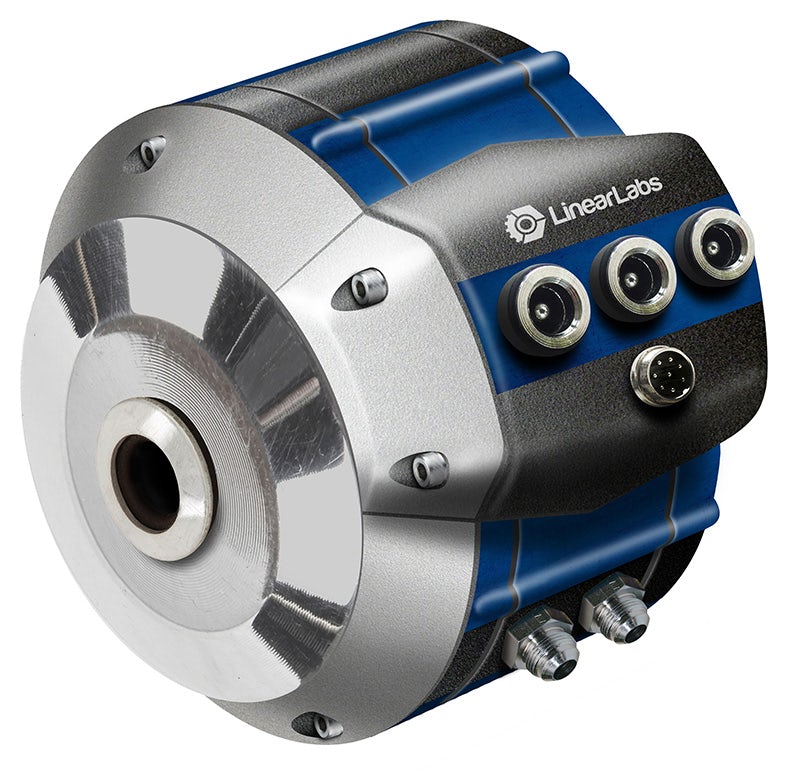
Andrew Gordon (1712 – 1751) was a Scottish Benedictine monk, physicist and inventor, who made the first electric motor in the 1740s. It is fully described in Versuch einer Erklarung der Electricitat (1745). Most of the basic research on motors was done in the 19th century, with all the major classes of motors available at the start of the 20th century. The one exception was the linear induction motor, that was developed between 1905 and 1949.
Most of the development work on motors in the 20th century falls into the category refinement or enhancement.
In the 21st century, Linear Labs, a Fort Worth, Texas, USA start-up, has raised US$4.5 million in seed capital to develop and commercialize a new electric motor, the Hunstable Electric Turbine (HET) that it claims reduces size and complexity while increasing efficiency, range and torque. Hunstable is the surname of the motor’s developers, son/ CEO Brad and father/ CTO Fred.
Electric motors typically use single-speed reduction gearboxes designed to let electric motors rotate at high, efficient RPMs while the drive wheels spin slower. These gearboxes are heavy, complex, expensive and unnecessary, according to Linear Labs. Their technology radically simplifies the electric power-train while delivering more efficiency/ torque/ power/ range.
Two important terms used below. Rotor = the moving part of a motor, that turns the shaft to deliver the mechanical power. Stator = the stationary part of the motor, that usually consists of windings or permanent magnets.
The HET is a three-dimensional, circumferential flux, exterior permanent magnet electric motor. What this means is that the motor’s electric field is engineered to create motion or, perhaps more correctly, eliminates many design imperfections that restrict motion efficiency in conventional motors. In addition, there are four rotors where other motors typically run one or two. The stator is fully encapsulated in a four-sided magnetic torque tunnel, each side having the same polarity, ensuring that all magnetic fields are in the direction of motion, and contributing to the torque of the motor. There are no unused ends on the coils, that could – potentially – dissipate energy.
Field weakening is a common technique used to increase more speed, when running at full voltage. In conventional motors this is done by reducing the field flux, by injecting extra current in the opposite direction. Current injection add speed at the expense of torque, and reduces motor efficiency. The HET uses a unique approach to field weakening by rotating one or both of its magnetic end plates out of alignment, meaning that this motor can build extra speed with no efficiency loss. Indeed, overall efficiency increases at higher speeds.
Another challenge with electric vehicles is torque pulsing (cogging) at low speed. This is experienced as jerky acceleration. The HET overlaps power pulses around the stator at low speeds. This provides high, but smooth torque as the motor accelerates. Then, the motor controller changes the motor’s operating patterns by grouping poles together as motor speeds increase. This acts like an electronic transmission, emulating six-phase, three-phase, two-phase or one-phase patterns and allowing the motor to increase speed without changing its frequency, voltage or current levels.
The HET doesn’t cost any more to manufacture than a conventional motor design, or require any specialized tooling – and it can be built without using rare earth metals (if necessary). The stator is easy to cool because liquid can run inside the copper coils.
The resulting HET motor produces two to five times the torque density, at least three times the power density and at least twice the total output of any permanent magnet motor of the same size. It also eliminates the need for DC/DC converters, gearboxes (previously mentioned), which reduces total vehicle cost and weight. Altogether this gives a 10 – 20% range increase, from a given battery pack.
These claims are backed up by comments from independent experts. However, without being an expert in the field one is unable to verify these claims, or to project the path between a disruptive idea its commercialization. Linear Labs says it’s looking to implement the motor in a scooter prototype in 2019, and a car prototype in 2021. The company sees further potential for the motors in other classes of vehicles, as well as multirotor drones, wind power generation and heating, ventilation and air conditioning (HVAC).
The most interesting aspect of this disruptive technology is to set it in conjunction with that of of the micro-battery from Bothell, Washington, USA startup XNRGI. These batteries claim to offer 3 – 6 times the energy density of current LI-ion batteries. This can be translated into either 3 – 6 time increase in range, or a significant vehicle weight reduction, or some combination of both.
For further information, visit Linear Labs and/ or XNRGI.

